Jackie Cochran in the cockpit of her North American Aviation P-51B-15-NA Mustang NX28388 at Cleveland Municipal Airport. In 1947 and 1948 she set four world and United States speed records with this aircraft. Photo © Smithsonian Institution. Source: National Air and Space Museum Archives, Smithsonian Institution SI-86-533.
Here’s the Story in Brief
On 18 June 1941, a Hudson V bomber, serial AM790, left the runway at Gander, Dominion of Newfoundland, and flew straight into history. The already famous American Jacqueline Cochran thus became the first woman to fly a bomber to Britain. Her achievement as First Officer on the Hudson paved the way for her efforts to involve women pilots in non-combat wartime flying, culminating in the creation of the U.S. Women’s Airforce Service Pilots (WASP) in 1943.
No Female Captains in Ferry Command
The Atlantic Ferry organization set up to deliver North American bombers from Canada to Britain had no women pilots on staff – NONE – during the Second World War. And no women captained overseas delivery aircraft during its 1940-1945 existence.
But on 18 June 1941 – 76 years ago – one woman flew a Hudson bomber at least part of the way across the North Atlantic as first officer. That woman was Jacqueline (Jackie) Cochran, the famous American “aviatrix.”
About a dozen women would later follow in her footsteps, pilots in the Air Transport Auxiliary, a British civilian organization.
Who was Jackie Cochran?
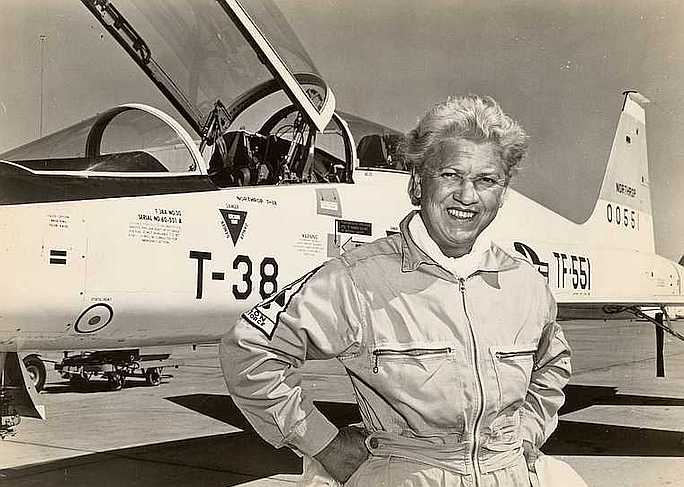
Jacqueline Cochran in front of her Northrop T-38 in which she set two world altitude records. Photo: © Smithsonian Institution. Source: National Air and Space Museum Archives, Smithsonian Institution NASM-00155028.
“The smartest girl in the air I ever saw,” is how Husky Flewellin, her instructor at Roosevelt Aviation School, described her. Cochran received her pilot’s licence in August 1932 after 18 hours of flying at Roosevelt Field, Long Island, New York. She immediately set out to fly to Canada to attend the Fourth Canadian Air Pageant at St. Hubert Airport, Québec, held 19-21 August 1932.
Passionate about flying, capable, forceful, she soon began setting world records. In 1935 she was the first woman to fly in the Bendix Transcontinental Trophy Race. In 1937, she became the first woman to make a blind landing, using only instruments.
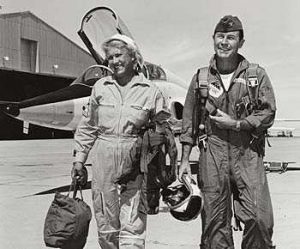
Jackie Cochran and Colonel Chuck Yeager, the first woman and man to break the sound barrier, at Edwards Air Force Base, California, 1962. Academy of Achievement: http://www.achievement.org/achiever/general-chuck-yeager/
In 1953, under the guidance of Chuck Yeager, she was the first woman to break the sound barrier, piloting an F-86 Sabrejet. Then in 1961, in her Northrop T-38, she set two world altitude records (horizontal flight and peak altitude).
According to Yeager, “She was tough and bossy and used to getting her own way. When Jackie Cochran set her mind to do something, she was a damned Sherman tank at full steam.” Cochran and Yeager became good friends. Their friendship would last until her death in 1980.
The official U.S. Air Force biography of Cochran states that she held more speed, altitude and distance records than any other male or female pilot in aviation history at the time of her death in 1980. The list of her achievements is long and impressive. You can read much more in her autobiographies, Stars at Noon (1954), and Jackie Cochran: An Autobiography (1987), or in the various biographies written about her.
Why Fly a Bomber to Britain?
Cochran had a bee in her bonnet. She figured that by ferrying a bomber to Britain she could promote a wartime role for the 2,000 women pilots licensed in the United States, freeing men for combat roles. At the same time, she could draw attention to the shortage of ferry pilots.
Demand for ferry pilots skyrocketed after President Roosevelt signed the Lend-Lease Act on 11 March 1941, creating a surge in the numbers of American-built aircraft available to Britain and its allies. These machines had to be ferried to coastal points, and then across the oceans to where they were needed.
In Ocean Bridge, his authoritative book about Ferry Command, historian Carl Christie notes that the number of airplanes delivered to Montréal from American manufacturers in June 1941 was 52, and that number rose to 168 in July. But deliveries to Britain were not keeping pace. Shortage of pilots was one factor. Other factors included the need for technical upgrades to incoming planes, and the unfavourable weather, which grounded aircraft for days at a time. The backlog of 59 at the end of June had grown to 133 by the end of July.
Even U.S. President Franklin D. Roosevelt expressed concern about the pace of deliveries. In early June 1941, he wrote to the British Prime Minister in an exchange of correspondence marked MOST SECRET AND PERSONAL:
“I am advised… that this condition is apt to grow worse as production reaches an accelerated rate over the next few months.”
Sir Winston Churchill replied:
“We are bent on speeding flow of aircraft from your factories to our squadrons…”
This exchange would lead to a new chapter in the history of the Atlantic Ferry organization. On 20 July 1941, “Atfero” would officially become Ferry Command, under the Royal Air Force. But that’s a story for another day.
Birth of an Idea
You can’t help but wonder – how did Cochran ever get that bee in her bonnet about ferrying a Hudson ?
By all accounts, the idea had its origins in March 1941, when Cochran attended an aviation awards ceremony at the White House. There she was introduced to General Henry H. “Hap” Arnold, chief of the Army Air Corps.
A few days later, a lunch meeting brought Cochran together with General Arnold and Clayton Knight. The Clayton Knight committee had a mission to recruit American commercial pilots who wanted to fly for the Allies. Remember, the United States was still a neutral country in early 1941 and such recruitment relied on quiet referrals rather than an overt campaign. Those around the lunch table were keenly aware of the ferry pilot shortage. From their conversation emerged the idea that Cochran should personally ferry a bomber to Britain to publicize the need for pilots.
Pulling Strings
Dreaming of flying an expensive bomber owned by another nation and desperately needed for war service is one thing – actually making it happen would prove quite another matter. Cochran would need all the high-level support she could muster.
After unsuccessful attempts to arrange this with Atlantic Ferry headquarters in Montréal, Cochran and her husband, the millionaire financier Floyd Odlum – a major contributor to Roosevelt’s presidential campaign, and a personal friend of Lord Beaverbrook, British Minister of Aircraft Production – used their political connections to get top-level approval for the plan. As a result, Cochran was invited to Montréal in June 1941 for the obligatory flight tests.
Flight Tests in Montréal
Cochran did not go unprepared. In “Women Ferry Pilots”, R. G. Pelley notes that Cochran had no experience flying a twin-engined aircraft. So she set up her own boot camp. She leased a Lockheed Lodestar – the civil transport equivalent of the Ventura bomber – and arranged with Northeast Airlines pilots to put her through her paces before her assessment.

Lockheed Lodestar aircraft 555 of the Royal Canadian Air Force, at Rockcliffe, Ontario, 23 November 1943. Photo: Canada. Dept. of National Defence / Library and Archives Canada / #PA-064763.
In Montréal, Cochran was given the same rigorous tests as other would-be ferry pilots. In her 2012 biography of Cochran, Rhonda Daughtery-Smith writes that after three days of difficult flying, Cochran received an excellent rating, with one exception. The test pilot reported that Cochran lacked the physical strength to handle the airplane’s handbrake.
Mutiny in the Ranks
Meanwhile the Atlantic Ferry pilots had got wind of the Cochran project. They did not take kindly to the idea of a woman flying one of “their” delivery aircraft to Britain. In fact, the whole business gave rise to a furor that very nearly grounded the entire service, according to Sholto Watt’s 1960 book, I’ll Take the High Road.
Watt reports that when the Atlantic pilots learned of the plan, they called a mass meeting and threatened to strike. In the end, an official decision provided a way out of the impasse as explained below.
Cleared to Fly as First Officer
Following the flight tests, Captain A. S. Wilcockson – superintendent of ferry operations – reported to the Atlantic Ferry organization’s governing committee that “physically Miss Cochran had some difficulty in handling Hudson aircraft on the ground.”
A high-level decision was made to let Cochran fly as First Officer. Captain Wilcockson was tasked with providing an efficient crew. This he did, assigning an American civilian pilot in the Atlantic Ferry organization, Grafton (“Grafe”) Carlisle, as captain.
Cochran was cleared to take the controls during the flight, but Captain Carlisle would do the take-off and the landing.
And that is how Jackie Cochran became the first woman to fly a bomber across the Atlantic.
Official Record of the Flight
Details of the journey of Hudson AM790 are recorded in the Gander Airport “Watch Log” in the entry for 18 June 1941.
The Hudson V bomber left Montréal on 17 June 1941 at 19:20 GMT. After arriving at Gander, Newfoundland, at 00:24 on 18 June, it departed the same day at 18:57, and reached Prestwick, Scotland, at 06:05 on 19 June, all times in GMT.
The “Watch Log” records three persons on board – Captain Grafton Carlisle, Miss Cochran and Radio Officer Coates.
A marginal note highlights the entry of 18 June:
“Miss Jacqueline Cochran is the first woman crew member on ferry aircraft.”
Headlines across the United States heralded the event:
“Miss Cochran Flies Bomber to Britain”
– Arizona Republican, Phoenix, Arizona
“Flies Distance Without Relief”
– Palm Beach Post, West Palm Beach, Florida
“U.S. Girl Pilots Bomber to Britain”
– Clarion Ledger, Jackson, Mississippi

Lockheed Hudson Mark V, AM790 ‘E’, with No. 608 Squadron, Royal Air Force, running up its engines at Bo Rizzo, Sicily. Photo: © Imperial War Museums (HU 66682).
Jackie Stormed by the Press
On arrival in Britain, Jackie Cochran barely had time to get settled in her hotel when British and American reporters stormed her room. The British Ministry of Aircraft Production, under whose auspices the bomber delivery program was then operating, tried to keep a lid on the story. “But then they had never had a flying glamor girl to deal with before,” as the Arizona Republican noted on 21 June 1941.
“I was at the controls all the way and had a wonderful trip completely without incident,” Cochran told the press after changing her grease-stained flying suit for a clean print dress. “My only companion was Captain Grafe Carlisle who captained my craft and did the navigating.”
Somehow she forgot to mention the radio officer on the trans-Atlantic flight. In a broadcast aired on the British Broadcasting Corporation on Monday, 23 June 1941, she corrected her slip, paying tribute to radio officer Richard Coates.*
* Richard Coates, a native of County Durham, England, was among those who lost their lives in the crash of the Return Ferry Liberator AM260 at Ayr, Scotland on 14 August 1941.
Travel Home in the Bomb Bay of a Liberator
Like other Ferry Command air crew, Cochran had the pleasure of the standard Return Ferry trip. Along with 12 other passengers, she endured some 20 hours in the converted bomb bay of Liberator AM261 with Captain Kenneth Garden* in charge. Cochran biographer Rhonda Smith-Daughtery reports that the “flight was rocky because heavy headwinds forced the pilot to fly low, close to the waves.”
Departing from the United Kingdom at 06:19 GMT on 30 June 1941, as recorded in the “Watch Log”, the Liberator flew into Gander at 23:30. The next day it continued to Montréal, ending Jackie Cochran’s brief time with Ferry Command.
*Kenneth Garden, an Australian civilian, perished 1 September 1941 near Campbeltown, Kintyre, Scotland, in the crash of the Return Ferry Liberator AM915.
Continuing the Campaign
Back in New York on 1 July 1941, Cochran held a press conference in her Manhattan apartment. Her main message, as reported in an Associated Press story, was that the United States “should form a group of women pilots similar to the Air Transport Auxiliary (ATA) of England to relieve any shortage of manpower in case of war.”
The next day, she was the guest of President and Mrs. Roosevelt at their estate in Hyde Park, New York. In 1939, Cochran had written to Eleanor Roosevelt about her idea, and over the years, Mrs. Roosevelt would be one of her greatest supporters. Mrs. Roosevelt wrote in her widely distributed newspaper column, “My Day” :
“Miss Jacqueline Cochran is lunching with us today and I am most anxious to hear the report of her trip.”
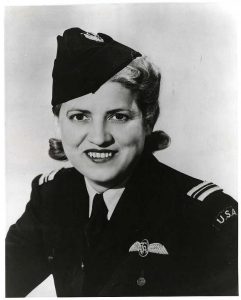
Jacqueline Cochran served as Flight Captain in the British Air Transport Auxiliary in 1942. She had just been re-elected President of the Ninety-Nines, the international group of women pilots when this portrait was made. Photo: H. A. Brown Associates. Source: Smithsonian National Air and Space Museum.
Cochran’s trip report would have included her impressions of the British Air Transport Auxiliary (ATA). After delivery of the Hudson in June 1941, Cochran had spent a few days studying the operations of the ATA. This civilian organization assisted the military within the U.K. by ferrying aircraft between factories and air bases, piloting air ambulances and so on. One in eight ATA pilots was a woman. A well-established service, the ATA was a working model of what Cochran envisaged for the United States.
Through 1941, Cochran continued to promote this idea. Eventually, she won General Arnold’s blessing for a pilot project. The outcome was that in March 1942, she led 25 highly qualified women fliers to serve in Britain within the ATA, performing aircraft ferrying duties.
During her absence, a parallel plan emerged. Within the Air Transport Command of the U.S. Army Air Forces, 25 outstanding women pilots were recruited to form the Women’s Auxiliary Ferrying Squadron (WAFS). The WAFS began its work of ferrying military aircraft on 10 September 1942.
Surely it is no coincidence that Cochran returned to the United States in mid-September and immediately met with General Arnold, Commanding General of the Army Air Forces. No coincidence either that on 14 September 1942, that same general approved a program for training women to serve as ferry pilots. Named the Army Air Forces Women’s Flying Training Detachment (WFTD), the program was placed under the direction of Jacqueline Cochran.
Less than a year later, on 5 July 1943, the two programs were merged. Named as director of the new organization – the Women’s Airforce Service Pilots (WASP) – was Jacqueline Cochran. During its 18-month existence, its pilots delivered a total of 12,650 aircraft of 77 types, and logged some 60 million air miles (96 M km).
Jackie Cochran had seen her idea become reality. But circumstances dictated that it would have a short life. In December 1944, in response to the decreasing need for pilots, General Arnold made the decision to disband the WASPs, The program formally came to an end on December 20, 1944.
The last word belongs to General Arnold, Chief of the Air Forces, whose statement on deactivation of the WASP program confirmed the validity of Cochran’s vision.
“The WASPs’ very successful record of accomplishment has proven that in any future total effort, the nation can count on thousands of its young women to fly any of its aircraft.”
– Valley Morning Star, Harlingen, Texas, December 17, 1944, p. 8.
Published 19 June 2017. Revised 29 November 2017.
Acknowledgements
A very special thanks to the image sales group at the Imperial War Museums who kindly expedited processing of the image of Hudson AM790 so that this post could appear on the date of Jackie Cochran’s historic flight 76 years ago.
If you have not visited any of its family of museums in person, please go online and explore the IWM website at http://www.iwm.org.uk/
Thanks also to George Fuller for his assistance with research queries. As always, any errors of fact or interpretation are the author’s sole responsibility. if you spot a problem, please contact me through the Comments box so that it can be corrected.
Sources and Suggested Books and Links
Many books and websites feature Jacqueline Cochran, telling the story of her ambitions and her many achievements. The following list is by no means exhaustive – it’s simply here to give you a head start on researching one of aviation’s most colourful characters. For economy’s sake the list includes the sources I referred to in researching this article.
Academy of Achievement. “General Chuck Yeager: First Man to Break the Sound Barrier.” (1 December 2016). Retrieved 10 June 2017 from http://www.achievement.org/achiever/general-chuck-yeager/
Christie, Carl, Ocean Bridge. Toronto: University of Toronto Press, 1995. Re women air crew, see pages 215-216 and especially the thorough note on pages 379-380 which lists names of women pilots who flew on Ferry Command crews.
Chuck Yeager website: http://www.chuckyeager.com/the-life-of-jackie-cochran
Cochran, Jacqueline, The Stars at Noon. Boston: Little, Brown and Company, 1954.
Cochran, Jacqueline and Maryann Bucknam Brinley, Jackie Cochran: An Autobiography. Toronto, New York: Bantam, 1987.
Collins, Shannon, Defense Media Activity, “WASPs were pioneers for female pilots of today, tomorrow.” (3 March 2016) http://www.af.mil/News/Article-Display/Article/685659/wasps-were-pioneers-for-female-pilots-of-today-tomorrow/
Hull, Michael D., “Jacqueline Cochran: Blazing A Trail For Women In Aviation Service.” (17 August 2015) Warfare History Network, McLean, Virginia: http://warfarehistorynetwork.com/daily/wwii/jacqueline-cochran-blazing-a-trail-for-women-in-aviation-service/
Library and Archives Canada, R184-212-8-E, Airport Registers 1939-1941, “Gander Watch Log,” Vol. 2, p. 23.
Library and Archives Canada, Primary Series Correspondence (King, William Lyon Mackenzie), R10383-7-9-E, Vol. 316, pages 267705 to 267707, Microfilm C4869.
National Aviation Hall of Fame, Dayton, Ohio: http://www.nationalaviation.org/our-enshrinees/cochran-jacqueline/
Pelley, R. G., “Women Ferry Pilots.” http://bobsganderhistory.com/cochran.pdf
Smith-Daugherty, Rhonda. Jacqueline Cochran: Biography of a Pioneer Aviator. Jefferson, N.C.: McFarland, c2012. Locations 2306-2308 in the Kindle edition.
Smithsonian Institution, National Air and Space Museum. https://airandspace.si.edu/explore-and-learn/topics/women-in-aviation/cochran.cfm
Swopes. Bryan R. “Jackie Cochran’s North American Aviation, Inc., P-51B and P-51C Mustang racers, NX28388, NX4845N and NX5528N.” https://www.thisdayinaviation.com/jackie-cochrans-north-american-aviation-inc-p-51c-mustang-racer-n5528n/ This is a must-see for details on Cochran’s records and her aircraft.
This Day in Aviation. https://www.thisdayinaviation.com/tag/pilot/
United Kingdom Air Ministry, Atlantic Bridge: The Official Account of R.A.F. Transport Command’s Ocean Ferry.
Honolulu, Hawaii: University Press of the Pacific, 1945.
U.S. Air Force official website: http://www.af.mil/information/heritage/person.asp?dec=&pid=123006481
Watt, Sholto, I’ll Take the High Road. Fredericton, N.B., Canada: Brunswick Press, 1960. See pages 153-155.
Wikipedia: Henry H. Arnold. https://en.wikipedia.org/wiki/Henry_H._Arnold
Wikipedia: https://en.wikipedia.org/wiki/Jacqueline_Cochran
Women Airforce Service Pilots Digital Archive at Texas Woman’s University: http://twudigital.contentdm.oclc.org/cdm/landingpage/collection/p214coll2
Women in Aerospace History: https://www.womeninaerospacehistory.com/tag/wasp/

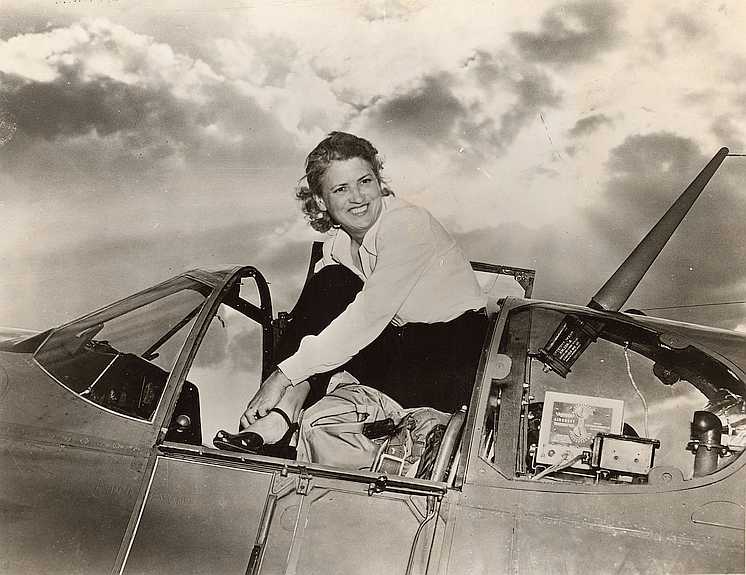
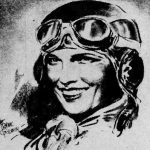
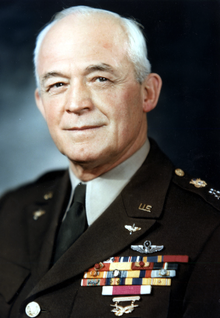

Recent Comments